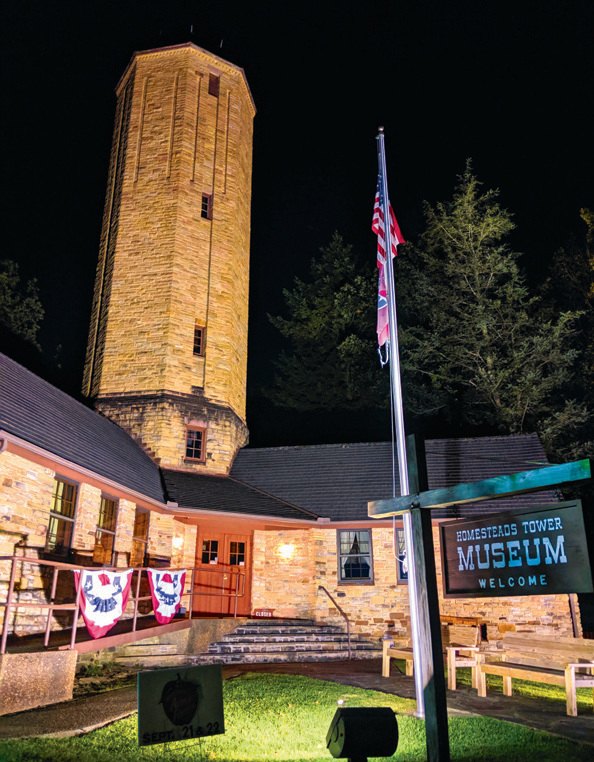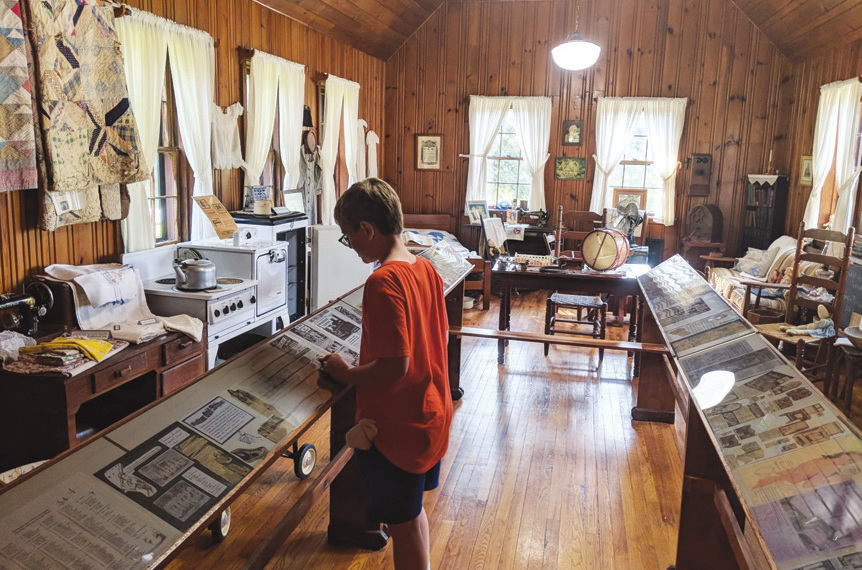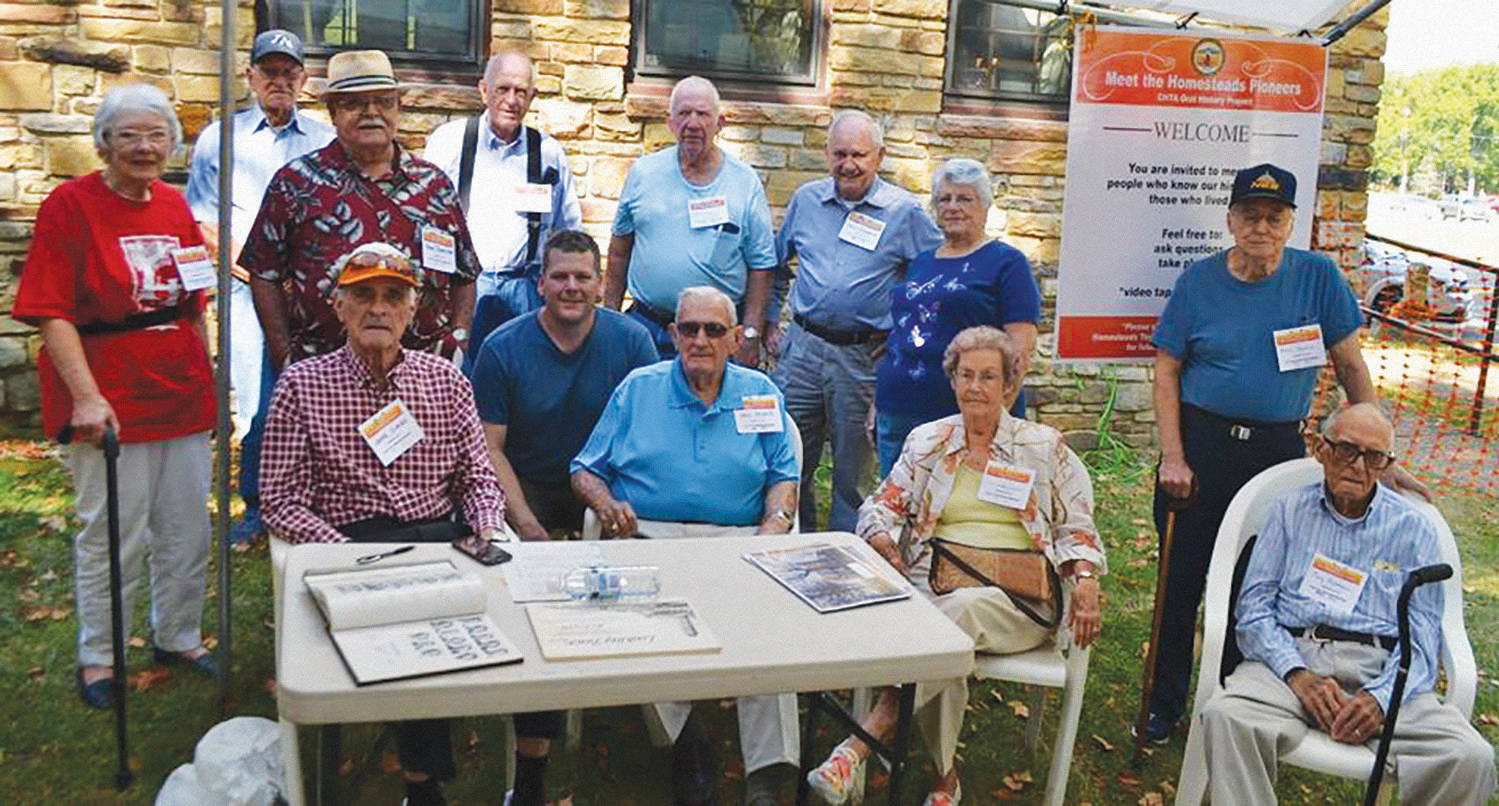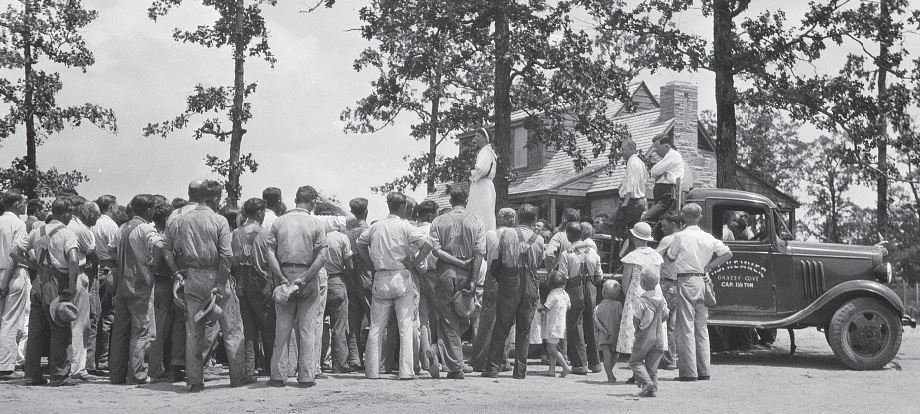Was it an experiment in socialism, an example of what the federal government could do to help people in Tennessee or both? Come to Crossville and find out for yourself.
In the 1930s, the federal government bought about 10,000 acres in Cumberland County and turned it into what was known as a “subsistence homestead.” The Cumberland Homesteads eventually consisted of 251 homes and as many barns. Additionally, there was a school, a park with a lake and a water tower that housed the project headquarters.
Most of these structures are still standing. The tower has been turned into a small museum with displays on the history of the community. You can even climb to the top of it and see a great view of the plateau below.
The Cumberland Homesteads was started by the Franklin Roosevelt administration, and the original purpose was to provide jobs for out-of-work men and homes for their families. There were more than 50 other homesteads projects in the United States, most of them located in areas with high poverty rates.
Families had to apply to live at the Cumberland Homesteads; single adults were not accepted. There was an interview process meant to determine whether men (who were assumed to be the heads of households) were hardworking and law-abiding because the federal government didn’t want people at the homesteads who weren’t both. About a third of the men whose families were selected were coal miners, a third were factory workers and a third were farmers.
Because New Deal projects in the South were segregated by race, no African-Americans were chosen to live at the Cumberland Homesteads. (There were homesteads projects elsewhere in the South for African-Americans only.)
To live in the Homesteads, you had to agree to work on all community projects and obey all the rules set by the administrators of the community. These administrators were chosen by the federal government.

The museum at the Cumberland Homesteads
The Cumberland Homesteads, including roads and all of its buildings, were designed by architect William Macy Stanton. He divided the land into small farm plots (the average size was about 50 acres) on which houses were to be built and where families were expected to live. As families moved to the Homesteads, the men whose families had been chosen to live there began building all the structures Stanton had designed. If they didn’t have carpentry or masonry skills, they were quickly trained.
The most important of these structures was a cross-shaped building and water tower meant to serve as the headquarters of the Homesteads. Stanton also designed blueprints for about a dozen different houses, and the residents would eventually use these plans to build all the homes. Barns were built so each family could live in them while the houses were under construction.
Today these homes seem simple and cozy. But in their day, they were considered large and luxurious, certainly compared to other houses in Depression-era Cumberland County.
Under Stanton’s original plan, homes weren’t going to have running water. But First Lady Eleanor Roosevelt reportedly intervened and made it clear that the homes had to have running water.
“Roosevelt insisted that the houses have indoor plumbing, for which we were thankful,” said Horace Hall, who grew up on the Homesteads. “The houses were wired for electricity, awaiting the Tennessee Valley Authority and Rural Electrification Administration that brought electricity in 1938. A front and back porch completed what we thought was the most wonderful house in the world.”
Homestead houses did not have central water systems but used well water. Most of the children who grew up on the Homesteads said their daily chores included pumping water from these underground wells.
The homesteaders also built a school, which is still standing. Although it has been greatly expanded over the years, it is now part of Homestead Elementary School.
To create a permanent place for recreation and a place where fish could be kept, the homesteaders also built a dam on nearby Byrd Creek, creating the lake that is now the centerpiece of nearby Cumberland Mountain State Park.
The original idea of the Cumberland Homesteads was to create a place where families that might have otherwise been living in poverty could live and even thrive. Families were expected to grow crops and fruit trees on their land, raise livestock and work together — making community decisions about schooling, law enforcement and business operations.

The Homesteads Tower Museum is in the structure that was originally built as a water tower and headquarters building.
The Cumberland Homesteads even started a factory where residents canned vegetables and fruits to be sold elsewhere. But that business didn’t make ends meet and didn’t last long.
Projects such as the Cumberland Homesteads were short-lived federal government trials. They were heavily criticized for being, in the opinion of some, experiments in socialism. In the early days of the Cumberland Homesteads, it was also unclear whether the people who lived there would own their homes or rent them as well as how much they would be paid for the work they did or in what currency.
The Cumberland Homesteads also suffered from the fact that it had five different administrators between 1933 and 1945 — each of whom had different philosophies and areas of interest.
After World War II, federal government homesteads projects were shut down. However, most of the people who had been chosen to live there eventually purchased the homes in which they were living and remained. Some of them have never been sold and are now owned by the children and grandchildren of original homesteaders.
The beautiful Cumberland Homesteads Tower was deeded over to Cumberland County, and by 1980, it had fallen into disrepair. People who lived in the surrounding area created the Cumberland Homesteads Tower Association to take care of it and preserve the history of the community. They host annual fundraisers such as an apple festival in September and a Christmas tour in December.
The association also runs the Cumberland Homesteads museum in the base of the tower. It includes information on the history of the place as well as original furnishings, objects and machinery that would have been used during that era.
Most of the original Homestead homes are still standing, and as you drive around the surrounding area, you can tell the difference between the original Homestead homes and others that have been built since. You can tour one of the original Homestead homes as part of your museum tour.

A mini-reunion of people who grew up at the Cumberland Homesteads takes place at the annual Apple Festival in September.



